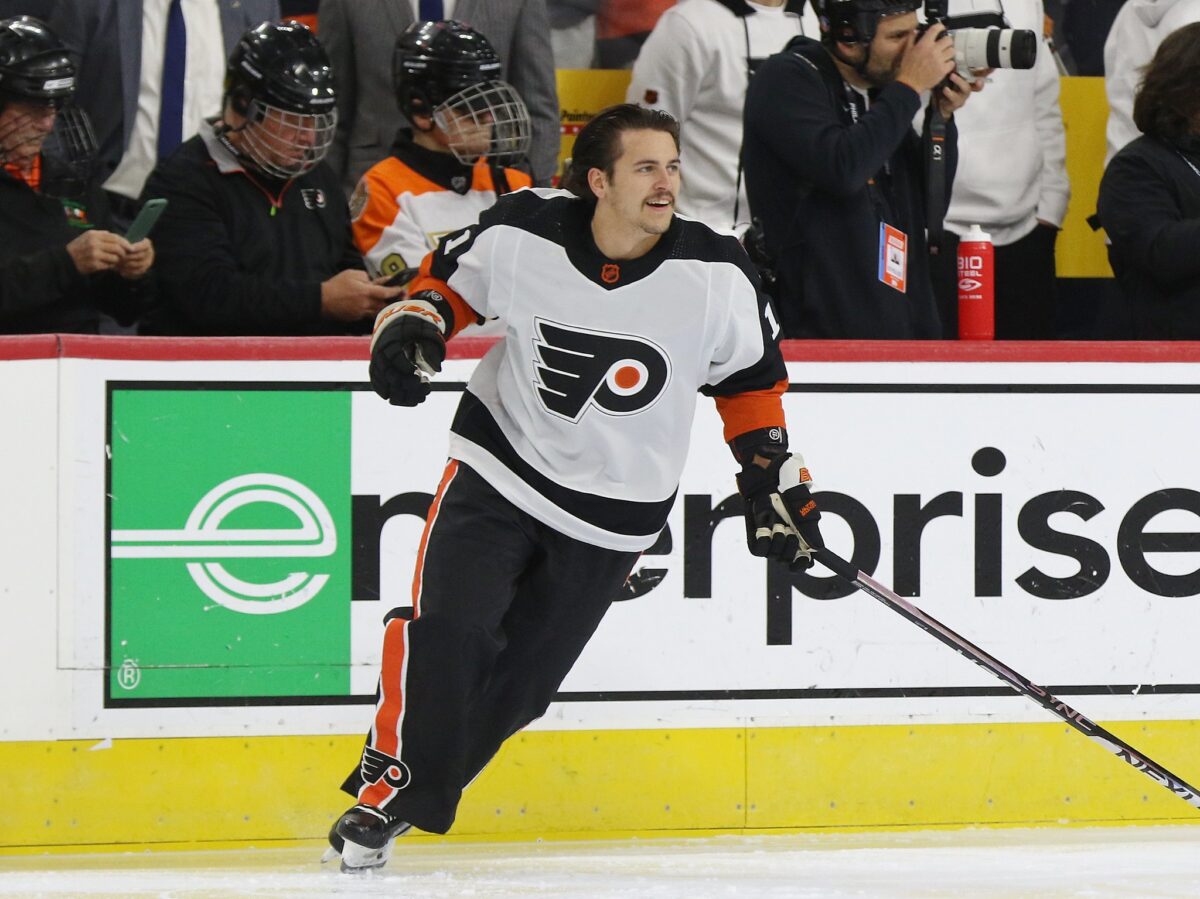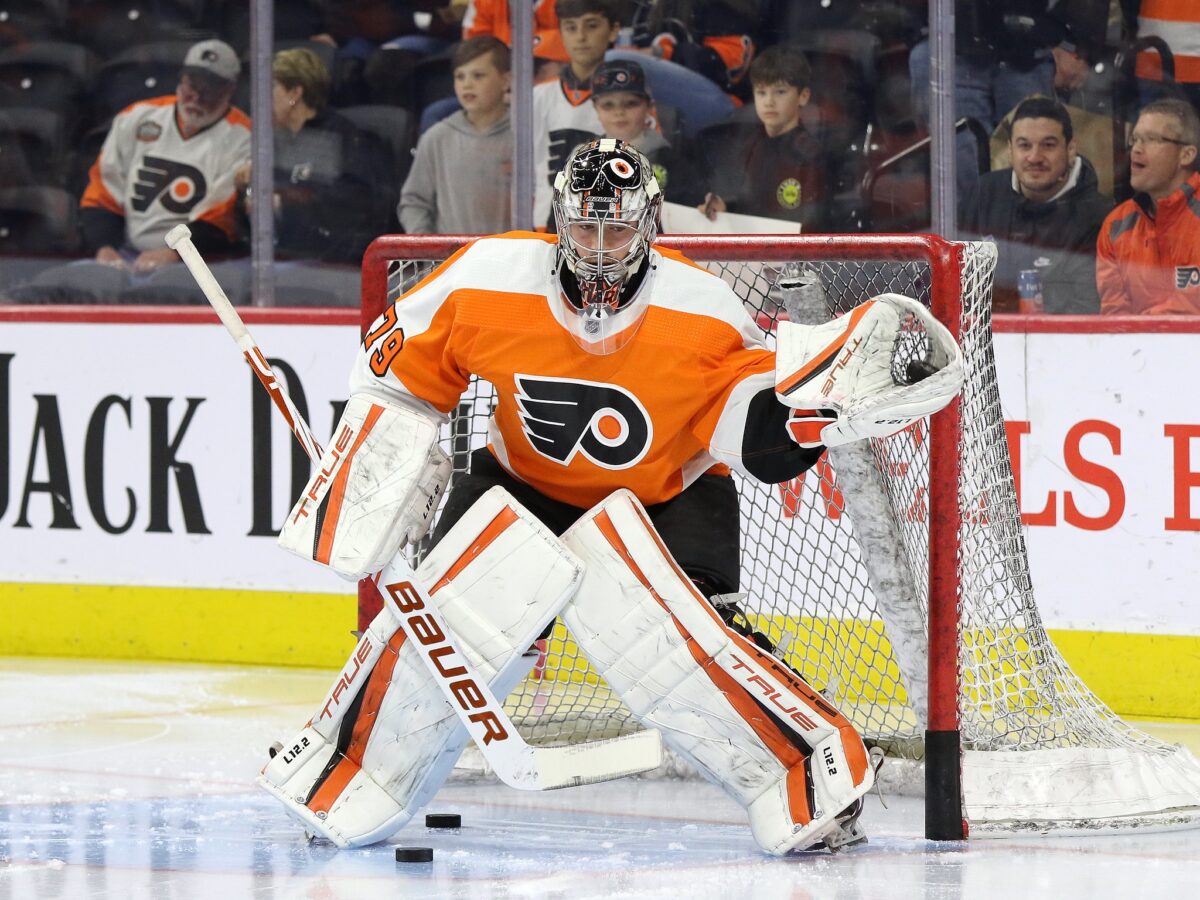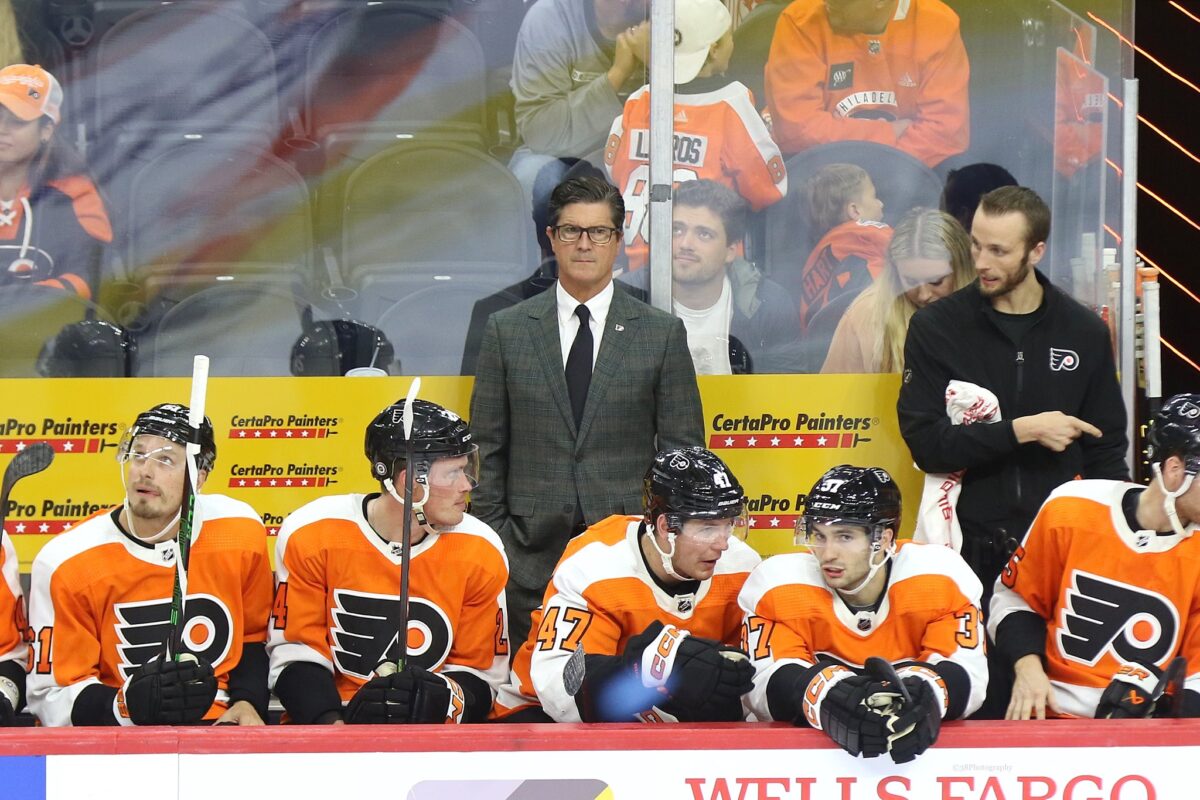The Philadelphia Flyers’ penalty kill has been a topic of conversation throughout this season. Now a third of the way through 2023-24, it hasn’t stopped being great. After finishing with the seventh-worst penalty kill last season, the Flyers have flipped the script. How did that happen, and what can we expect from the team moving forward?
Flyers’ “Power Kill”
In previous seasons, the Flyers have had a very passive penalty kill. Teams generated high-quality chances against them often, and their penalty kill had consequently been either average or below average in each of their previous nine seasons in terms of their play at 4-on-5. Now, it is some of the best the league has ever seen.
Related: Flyers’ Strengths & Weaknesses for 2023-24
This season, the Flyers have an aggressive style and frequently hound the puck carrier when the time is right. Despite their aggressiveness, there is rarely a shooter ready to one-time a shot in a wide-open net. Not only do the Flyers force their opponents to make plays, but they don’t give them much to work with, either.
The Flyers have been shutting down superstars all season long. The best players in the league are oftentimes great at making decisions, but that doesn’t mean they can do it without having any space on the ice. Even when they are down a man, the Flyers are still terrific at covering all areas of the ice.
Getting to the “power kill” of the Flyers, they are tied for the NHL lead in shorthanded goals with seven on the season. Forward Travis Konecny has been a huge help in making that happen, accounting for three shorthanded tallies on his own. His combination of elite speed, solid defensive instincts, and presence as a great shooter makes him a deadly weapon on the penalty kill.

Even when Konecny finds himself in the box, the Flyers are still killing penalties. He is certainly a big help, but the team as a collective has an abundance of capable penalty killers. That’s the beauty of assistant coach Brad Shaw’s system, and the players have done a wonderful job in executing it. Their ability to adapt to a new-look scheme seamlessly has given a team that was expected to be near the bottom of the standings some life.
In the grand scheme of things, seven shorthanded goals don’t do much to grant one of the top records in the Metropolitan Division, but a kill rate at over 86 per cent and a ranking well inside the top-10 in the NHL absolutely does. It has been a very long time since the Flyers have had a truly good penalty kill, but that’s changed this season. The importance of special teams has been made very apparent.
Flyers’ Incredible Penalty-Kill Goal Differential
The ridiculousness — and lack of sustainability — of the Flyers’ penalty kill comes with their goal share when shorthanded. This season, the Flyers have allowed just eight goals at 4-on-5, yet scored seven times. This means that they are scoring 46.7 percent of the goals in that situation, which is a remarkable number. When considering all penalty-killing situations, the Flyers are on pace for a shorthanded goal differential of just minus-15 this season. This would make them the second-best team in league history in that area since 1977-78.
A big part of this goal differential is not just the play of the Flyers’ defenders, but their goaltender, as well. In 4-on-5 scenarios, Carter Hart has a save percentage (SV%) of .925. This puts him in fifth place in the NHL among goaltenders with 50 or more minutes of ice time in said scenario, and is one of the major reasons as to why the Flyers aren’t giving up goals. In all penalty-killing situations, his SV% goes down to just .895, but that still puts him in the top-15.

This is probably where the lack of sustainability comes in. The Flyers are dominant at 4-on-5 but not as much when faced with a 3-on-4 or 3-on-5 situation. For now, the Flyers’ penalty kill remains one of the biggest reasons for their success.
Flyers Can Build Off This Run
The Flyers’ success on the penalty kill might not just be a one-year wonder, but could be a theme moving forward. As long as they are maintaining their identity of an aggressive style and adapting to the different power play styles that exist across the league, their ability to have a good penalty kill should not simply vanish. A disappearing act would depend on several factors, including how well the Flyers’ future prospects can learn the system, whether Shaw has to be replaced because he is hired as a head coach elsewhere, or even if every team collectively figures out how to get around the Flyers’ PK.
The league is constantly changing, but the groundwork is already in place. The Orange and Black should be able to build off of this play not just the rest of their 2023-24 campaign, but potentially several seasons down the line.

For as many kudos as someone like Shaw deserves, the players deserve to be acknowledged, too. Both the defenders and forwards are countering some of the best players and schemes in the NHL. Their style is only as good as the players executing it, and they have done it to perfection. The transformation of the penalty kill in just one single season is not an easy feat.
Since the Flyers are rebuilding, there aren’t too many players on the team that will stay for more than just this season and the next. It will be important for the players who will be on the team for many seasons down the line to pass on what they know to help newcomers or young draft picks find their niche.
The Flyers’ penalty kill remains one of the biggest surprises of the entire season, but there is no determining when it will follow a normal scoring rate. At this point, all the team can do is enjoy the ride and the benefits their nearly flawless unit brings them.